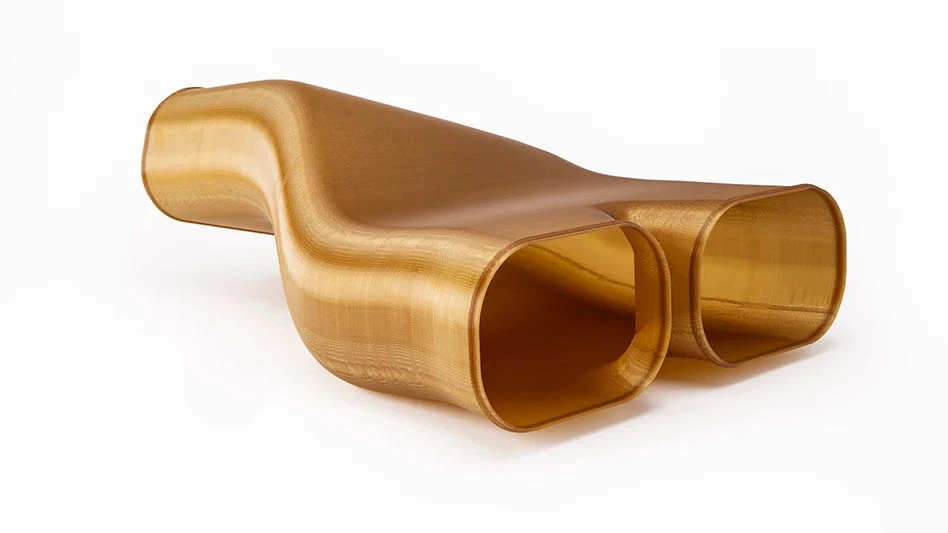
t simply looked too clean,” Juan Puente thought when he saw Universal Robots (UR)’s collaborative robot (
The thermal spray supervisor at Aircraft Tooling Inc. (ATI) in Dallas, Texas, needed a rugged system – something tough enough to handle the dust and heat of
However, he needed an option that the traditional systems could provide as ATI sought to automate aviation repair tasks.

“The cost [of a traditional robot] was outrageous. The cast iron models we looked at were too bulky; we could not easily move them between cells; they were hard to program; and all required safety
“The UR10 robot had the required reach for the spray distance and the cost was about half of everything else we looked at. It was very user-friendly and portable. Because of its collaborative safety features we did not need to fence it in,” Puente explains. UR robots are classified as

Though Puente readily admits that the UR10 “won their hearts,” there was significant hesitation at ATI as to whether the robot would operate reliably in the spray booth’s hot and dusty environment.
Didn’t believe it
“We were very surprised. I actually thought the robot wouldn’t stand it. Some of these powder coatings are tungsten carbide which is a hard metal coating. If it seeps into the bearings of the robot, we were afraid it would destroy them,” he explains. ATI opened the seals on the UR10 and found the bearings intact.
“There were no particles in there, three years of operation, it doesn’t show,” says Puente, adding that recoil from the spray gun was another concern. “We were nervous that the recoil would trip the robot or interfere with the servo capabilities. We went as high as the pressures would take to make it bounce, and it wouldn’t do it. The robot simply stayed in position.”

Nick Armenta,
Maintenance friendly
ATI staff was also surprised to find that no preventive maintenance is required with the UR robots.
“All we do is dust the robot arm off and keep on going,” Puente says, adding that he did not have to pay for a licensing or service agreement. “That was really unusual compared to other solutions we looked at. With the UR robot, everything was included in the purchase price.”

Armenta explains that service calls with the UR robots are not typical.
“We do have to make them occasionally, and that is something we provide free of charge. If there is any kind of issue with the robot and it’s under warranty, we can get a part the next day, if we don’t have it in stock,” he says, recalling how his company has been able to get customers’ robots up and running again the same day by exchanging joints in the robot arms.
Inverted installation
The UR10 robot ATI chose is the largest of the three collaborative robot models – UR3, UR5, and UR10 – Universal Robots offers. The
“We chose the UR10 because of its length, being able to hang it upside down, walk underneath it. Keeping the floor clear of anything was always an advantage to us,” says Puente, who now uses two UR10 robots with a third being installed. The robots’ payload and speed (39.4ips) was more than sufficient for ATI.
Most of the speed comes from turntables making sure that the coating is being applied at a certain velocity,” Puente explains.
“Our spray guns aren’t that heavy, so payload wasn’t an issue.
Fast programming
It took the ATI team about four hours to unpack the robot, get it going and programmed.
“It was a simple, user-friendly process as opposed to other robots with a much more complex, multi-step programming interface,” says the ATI supervisor, who also received a day of free training from Olympus Controls. Programming the UR10’s spray path was done using the
Aircraft Tooling Inc.
www.atirepairstation.com
Universal Robots USA Inc.
www.universal-robots.com
IMTS 2018 Booth #236861

Explore the August September 2018 Issue
Check out more from this issue and find your next story to read.
Latest from Aerospace Manufacturing and Design
- NASA selects instruments for Artemis lunar terrain vehicle
- Twin-cutter boring head
- Bell awarded funding for X-plane build phase of SPRINT program
- Shaft coupling clamps
- #46 Lunch + Learn Podcast with SMW Autoblok
- Gleason Corp. acquires the Intra Group of Companies
- Thread milling cutter reduces cutting pressure, vibration
- Malaysia Aviation Group orders 20 more Airbus A330neo widebodies





